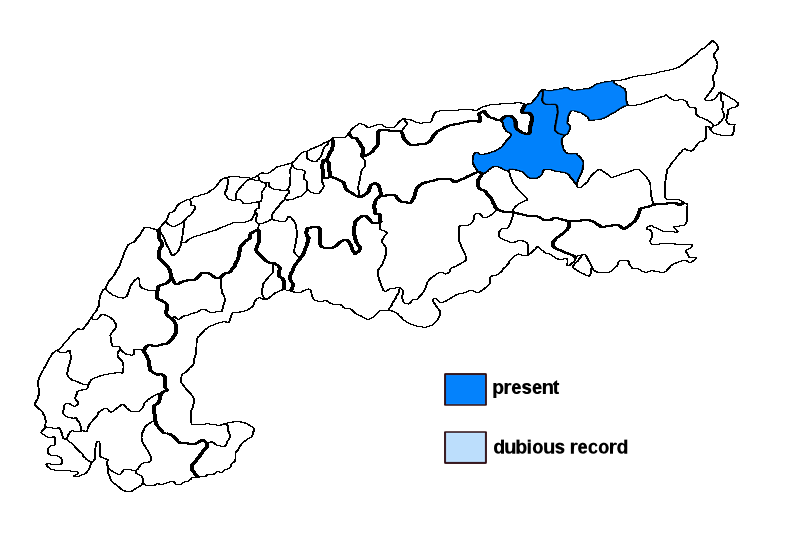Thelidium montanum (Hepp) Körb.
Syn.: Paraphysothele montana (Körb.) Zschacke, Thelidium nylanderi (Hepp) Lönnr. var. montanum Hepp in Arnold
Lichenised.
Substrate: calciferous rocks
Altitudinal distribution: montane belt (potential vegetation: deciduous forests dominated by Fagus sylvatica and closed coniferous forests with Picea abies)
Note: this taxon was described by Körber (Parerga: 351, 1863) as a new species, and not as a new combination of an already existing taxon. His description constitutes the protologue. Körber (l.c.) cited Th. nylanderi (Hepp) Lönnr. β montanum Hepp as a synonym. This infraspecific taxon was published by Arnold (Flora 41: 554 [misprinted “254”], 1858), who attributed both name and description to Hepp. The two taxa are based on the same type. The species has a greyish, farinose thallus and hemispherical, subsessile perithecia with involucrellum reaching down to the base, partly persisting interascal filaments (fide Zschacke), and 1-septate, narrowly ellipsoid ascospores with a somewhat wider upper cell (to c. 25 µm long); the generic placement is in need of verification; on calcareous rocks at rather low elevations, known from a few localities in the Eastern Alps and the northern foreland.
Austria: Salzburg; Oberösterreich;





